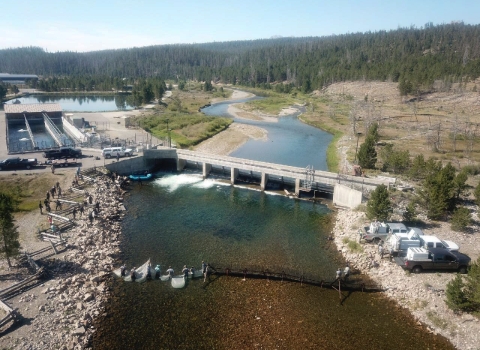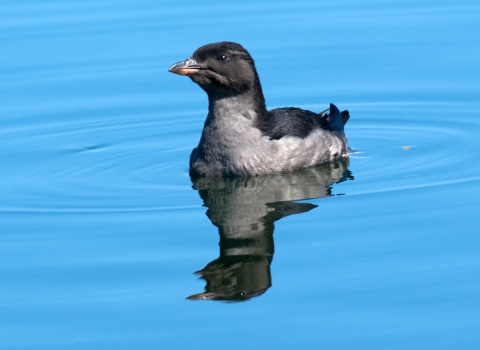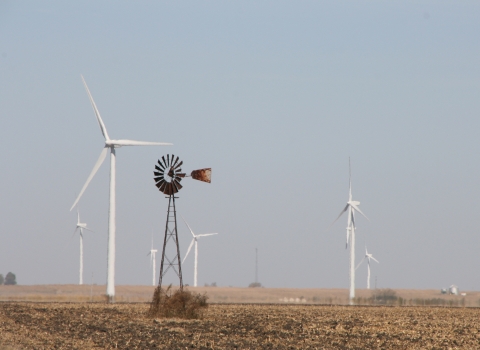The U.S. Fish and Wildlife Service today announced a draft methodology to better identify and prioritize pending Endangered Species Act (ESA) “status reviews,” the process by which the Service determines whether a species that has been petitioned for listing warrants ESA protection. The methodology will assist the Service and its partners in addressing America’s most imperiled wildlife and plant species first, while reinforcing collaboration between the Service and its partners and maximizing transparency throughout the decision-making process.
“This methodology will help us strategically prioritize work on Endangered Species Act listing petitions to ensure the most urgent wildlife needs are addressed first, while also providing a common sense and defensible path to address all petitions,” said Dan Ashe, Service Director. “The methodology will help us provide greater certainty and transparency to our partners through subsequent development of a publicly available, strategic workplan that reflects our work priorities.”
Association of Fish and Wildlife Agencies Vice President and Florida Fish and Wildlife Conservation Commission Executive Director Nick Wiley expressed gratitude for the Service’s commitment to working with state fish and wildlife agencies to address the backlog of 12-month petition findings. "This process should help state agencies address their public trust responsibilities with a measure of deliberate or planned conservation engagement,” he said.
To prioritize its current workload of status reviews and accompanying petition findings, the Service intends to place each pending petition finding in one of five priority categories or “bins.” Placement into these categories will be based on the evaluation of available biological data, threats to the species, conservation measures that can address those threats, and the existence of any new or developing science that can help inform the listing decision.
The five prioritization categories are briefly described as the following:
1: Highest Priority: Critically Imperiled – Species that appear to be critically imperiled and in need of immediate action.
2: Strong Data Available on Species’ Status – Species for which we have existing strong scientific data supporting a clear decision on status.
3: New Science Underway to Inform Key Uncertainties – Species for which important emerging science on their status is underway to answer key questions that may influence the petition finding; uncertainty about species’ status can be resolved in a reasonable timeframe.
4: Conservation Opportunities in Development or Underway – Species for which proactive conservation efforts by states, landowners, and stakeholders are underway or in development. The conservation efforts should be organized and likely to reduce the threats to the species.
5: Limited Data Currently Available – Species for which there is little information on status and threats available to inform a petition finding.
This methodology does not apply to actions to downlist a species from an endangered species to a threatened species or to actions to delist a species. The methodology is intended to complement and be applied in conjunction with existing listing guidelines and policies.
The resulting list of prioritized actions will be developed into a National Listing Workplan for the Service, to be shared with states and stakeholders and posted online. This workplan will be updated annually as new information is obtained.
In the workplan, the Service will set dates for when it will undertake status reviews and petition findings – using the new methodology to prioritize when it would make those decisions. The existing workplan, which included transparent, multi-year timelines, helped catalyze successful conservation efforts for species including the greater sage-grouse, Montana arctic grayling, New England cottontail rabbit, and dunes sagebrush sagebrush
The western United States’ sagebrush country encompasses over 175 million acres of public and private lands. The sagebrush landscape provides many benefits to our rural economies and communities, and it serves as crucial habitat for a diversity of wildlife, including the iconic greater sage-grouse and over 350 other species.
Learn more about sagebrush lizard, among others.
The notice will publish in the Federal Register on January 15, 2016, and also will be available at www.fws.gov/policy/frsystem/default.cfm by clicking on the 2016 Notices link. Public comments on this draft methodology can be made at www.regulations.gov by entering the docket number FWS-HQ-ES-2015-0169. Comments will be accepted until February 16, 2016, 30 days following publication in the Federal Register.
The ESA provides a critical safety net for fish, wildlife and plants and has prevented the extinction of 99% of the species originally listed as threatened or endangered, including hundreds of imperiled species, and has promoted the recovery of many others. The Service is actively engaged with conservation partners and the public in the search for improved and innovative ways to conserve and recover imperiled species. To learn more about the ESA petitioning and listing processes, please visit www.fws.gov/endangered/what-we-do/listing-overview.html.



